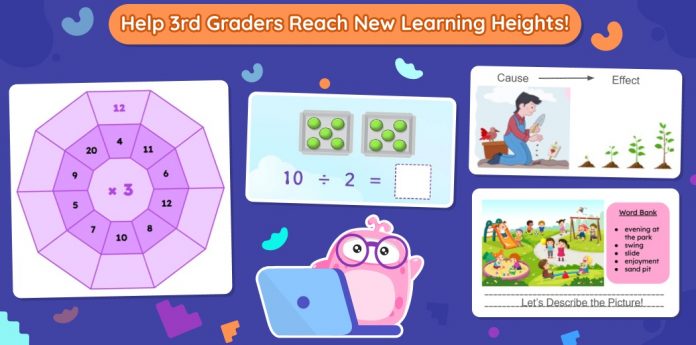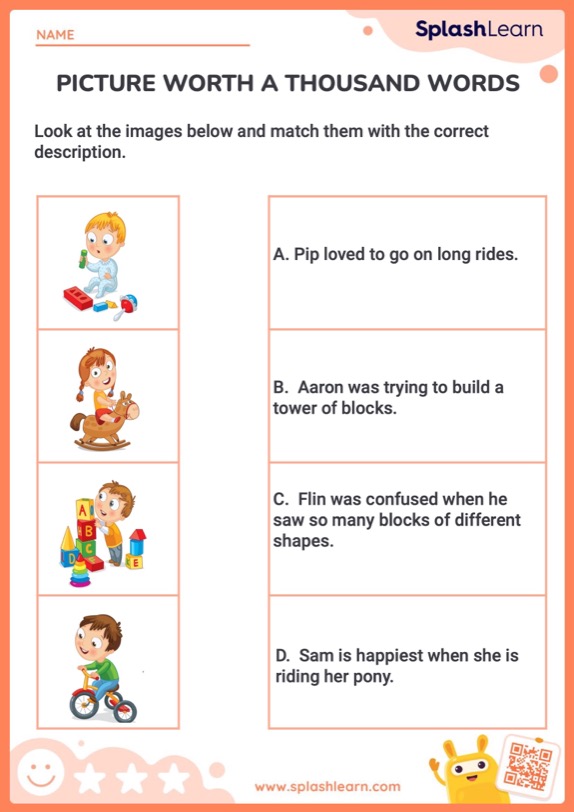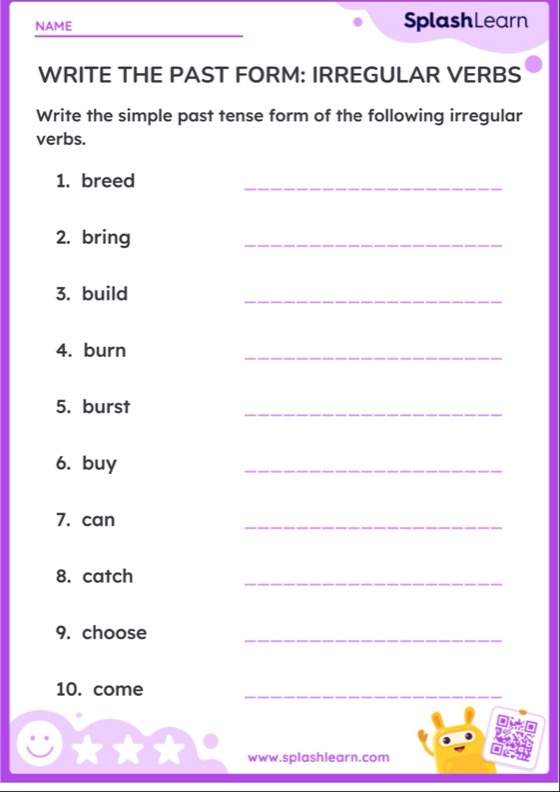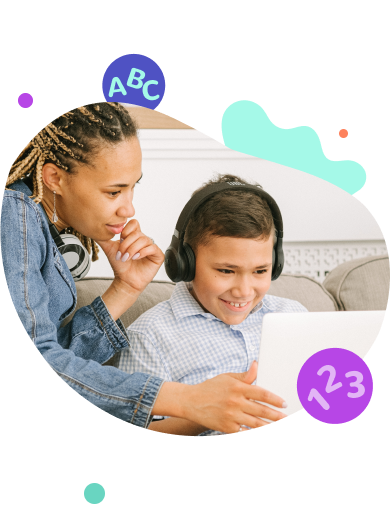What do kids learn in 3rd grade? They explore essential skills across various subjects, including math, reading, social studies, and science. By the end of 3rd grade, they should be able to read fluently, solve basic multiplication and division problems, and understand key concepts in science. Third graders face more demanding standards that require them to apply previous knowledge, making this year a critical leap in academic complexity.
Math & ELA | PreK To Grade 5
Kids see fun.
You see real learning outcomes.
Watch your kids fall in love with math & reading through our scientifically designed curriculum.
Parents, try for free Teachers, use for free
For a quick look back at the skills covered in the previous year, check out this helpful guide on what’s taught in 2nd grade. It highlights essential topics that set the foundation for 3rd-grade learning.
What Is Taught to Kids in 3rd Grade?
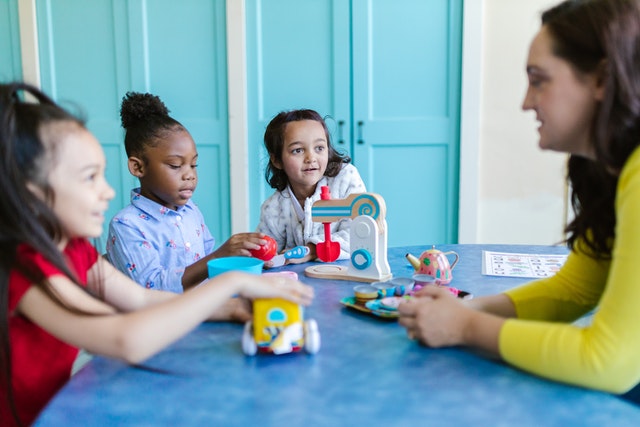
Here are some of the subjects your child will be learning in 3rd grade. You can ask their teacher what the focus will be for each subject in the coming year. Using this guide, you can help your child get ahead or catch up in any of the following areas:
1. Math for 3rd Graders
What is taught in 3rd grade math? Kids continue to work on basic addition and subtraction skills but will begin learning about regrouping (also called carrying or borrowing). This is a crucial year of math learning since several new concepts are introduced—fractions, multiplication, division, area, perimeter, and more! Plus, kids learn to use four arithmetic operations to solve simple real-life word problems.
Here are important math skills kids learn in 3rd grade, along with fun activities parents can use to support their child’s learning at home:
I. Number Sense
- Round whole numbers to the nearest 10 or 100.
i) Rounding on a Number Line: Draw a number line and place a number on it, then ask the kids to round it to the nearest 10 or 100 based on the position of the number. Here are fun games to practice rounding on a number line:
ii) Rounding Roller Coaster: Draw a “roller coaster” line on paper with stops at multiples of 10 or 100. Give your child a number (e.g., 34) and ask them which “stop” is closest, rounding it up or down to the nearest 10 (e.g., 30 or 40). This visual approach helps them see which multiple is closer.
Related Reading: How to Teach Number Sense
II. Addition and Subtraction
- Fluently add and subtract within 1,000 using different strategies.
i) Break down large numbers into hundreds, tens, and ones to add or subtract. Example: 725 – 512 (Break into 700-500, 20-10, 5-2).
ii) Create bingo cards with different sums or differences within 1,000. Call out the answers, and students mark the corresponding equation on their cards.
iii) Help kids explore addition and subtraction strategies through visual and engaging games that use base-10 blocks, place value charts, and even word problems for better understanding. Here are some fun games to get started:
III. Multiplication within 100
a) Find products of whole numbers using equal groups or arrays.
i) Use arrays of objects (like beans or buttons) to represent multiplication facts. Use these objects to create equal groups and find the total by multiplying.
ii) Use these interactive games for reinforcement. In these games, kids will understand multiplication as repeated addition by visualizing it using arrays and equal groups.
b) Multiply one-digit whole numbers by multiples of 10 in the range 10-90.
i) Use small items like buttons or coins to create groups of 10, 20, 30, etc. For example, to practice 3×20, make three groups of 20 buttons. Have your child count each group by tens to find the total (e.g., 20, 40, 60), reinforcing the concept of multiplying by multiples of 10.
ii) Help kids practice multiplication by multiples of 10 using these fun games. Kids will solve a series of problems based on multiplying numbers
c) Know multiplication tables up to 10. Fluently multiply within 100.
i) Multiplication Hopscotch: Create a hopscotch board outside or on the floor using numbers in a specific multiplication table (e.g., 3, 6, 9 for the 3 times table). Have your child hop along the board while saying each product out loud, reinforcing their memory of the table.
ii) Play “Multiplication War” with cards: Each player draws a card and multiplies the numbers, and the player with the highest product wins.
iii) Recite and sing multiplication tables up to 10 to reinforce quick recall.
iv) Enjoy times tables games, where kids will master multiplication facts of numbers 2-10 using number charts, number lines, arrays, and fun activities.
d) Use properties of multiplication to multiply.
i) Write multiplication pairs on index cards, such as “3 x 4” and “4 x 3.” Have your child match pairs that show the commutative property (e.g., 3 x 4 = 4 x 3) and explain that the order doesn’t affect the result. This visual matching reinforces the idea of the commutative property.
ii) Use building blocks to group numbers for the associative property. For instance, to calculate (2×3)×4, group two blocks of three, multiply to get six, then multiply six by four. Show that it’s the same as 2×(3×4) by regrouping, reinforcing that grouping order doesn’t change the result.
iii) Help kids use multiplication properties to solve problems. In these games, kids will learn to use the commutative, associative, zero, identity, and distributive properties of multiplication to complete multiplication sentences.
Related Reading: How to Teach Multiplication to Kids
IV. Division
a) Interpret whole-number quotients using the context of equal shares.
i) Use small objects (like candies or blocks) to divide them into equal shares, explaining how many each person gets.
Begin here
ii) Help kids understand the concept of division as equal shares using a number line.
b) Determine unknowns in a division equation. Understand division as finding an unknown factor in a multiplication problem.
i) Create simple division equations (e.g., 15 ÷ ? = 3) and ask your child to determine the unknown number by looking at the times table.
ii) Fill-in-the-Blank Challenge: Present equations with blanks for the dividend or divisor (e.g., 24 ÷ _ = 6). Your child has to determine the missing number. This helps them practice finding unknowns while reinforcing their understanding of division. Get started with these fun games:
c) Fluently divide within 100.
i) Create flashcards with division facts up to 100 (e.g., “48 ÷ 6”). Challenge your child to go through the cards quickly to build speed and fluency with division facts.
ii) Set a timer and ask your child to solve as many division problems within 100 as they can in one or two minutes. Make it fun by letting them try to beat their previous score each time, turning it into a game.
Related Reading: How to Teach Division to Kids
V. Fractions
- Identify and represent unit fractions on a number line. Identify and represent non-unit fractions a/b on a number line.
i) Draw a large number line on the ground. Mark numbers and divisions. Call out a fraction and have students physically jump to its place on the line.
ii) Fold paper into different fractions and label them.
iii) Play interactive games on plotting and identifying fractions on a number line.
- Understand, identify, and generate equivalent fractions.
i) Use fraction bars or strips to visually represent fractions and find equivalent fractions by comparing the sizes of pieces.
ii) Equivalent fractions games: Many kids need help understanding how different fractions can represent the same value. Equivalent fractions games provide a hands-on way to visually compare fractions, using number lines and fraction bars to clarify how parts of a whole relate to each other. Check out these games for a fun learning time:
- Compares two fractions with the same numerator or the same denominator.
i) Use visual fraction models (bars or circles) to compare fractions with the same numerator or denominator and discuss which is larger or smaller.
ii) Help kids master these tricky concepts with targeted games. In these games, kids will learn to compare fractions using real-world models, number lines, and fun activities:
Related Reading: How to Teach Fraction to Kids
VI. Measurement and Data:
- Estimate and measure length, mass, and capacity. Solve one-step problems involving a whole number of customary measurements.
i) Set up stations with objects for students to estimate and then measure using rulers, scales, and measuring cups.
ii) Measure household objects using different units of measurement (inches, centimeters, cups, liters).
iii) Measurement games: Try these measurement games that provide interactive, real-world scenarios to help kids understand length, weight, and volume through hands-on activities, making abstract measurement ideas easy to visualize and apply.
- Tell time to the nearest minute. Solve one-step word problems involving addition and subtraction of time intervals in minutes.
i) Analog Clock Puzzles: Create puzzles with cut-out hour and minute hands. Children can put the clock hands together to show specific time to the nearest minute.
ii) Elapsed Time Problems: Give students word problems about time intervals within the same hour (e.g., “The show starts at 3:00 and ends at 3.35. How long is the show?”) and have them solve using an analog clock or number line.
iii) Telling time games: Kids will practice setting an analog clock after a specific interval and calculating the elapsed time.
- Create and interpret scaled bar and picture graphs.
i) Use toy cars or other small toys to create a picture graph where each toy represents 5 items. Ask your child to “count” the toys using the scale.
ii) Create a bar graph of completed chores. For example, use a scale where 1 block = 3 chores. Have your child track their progress using this scale.
iii) Moving to scaled graphs can be challenging for kids. Consider using fun games that help kids understand data representation and comparison in a fun, interactive way.
- Understand the concepts of area and perimeter. Measure the area using unit squares.
i) Place a piece of string around the edges of a square or a rectangle to measure its perimeter. Cut the string and then measure it with a ruler to see the total length.
ii) Draw a small rectangle or square on paper and ask your child to draw a “fence” around it (the perimeter). Then, have them color the inside, explaining that they are “filling” the area.
iii) Area and perimeter games: In these games, kids learn everything from the basic idea of perimeter and area to the methods of using unit squares and side lengths to calculate the area and perimeter.
2. Language Arts for 3rd Grade
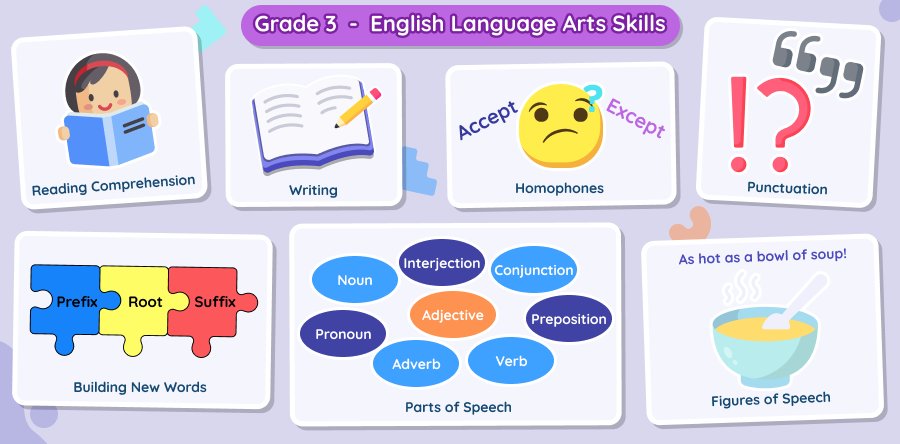
In 3rd grade language arts, students build on their reading and writing skills, aiming to read fluently and comprehend a variety of texts. By the end of the year, they should be able to read fluently without pausing to sound out words and fully understand the content.
Writing development focuses on different styles, including narrative, opinion, informative, and explanatory essays, helping students express their thoughts clearly and organize ideas effectively.
Here are reading and writing skills kids learn in 3rd grade, along with practical strategies parents can use to boost learning at home:
I. Phonics and Word Recognition:
- Identify and know the meaning of the most common prefixes and suffixes. Identify, know the meanings of, and decode words with suffixes.
i) Write down common prefixes (e.g., un-, re-) and suffixes (e.g., -ful, -less) on cards. Give your child root words and ask them to match the prefixes or suffixes to form new words, then discuss the meanings.
ii) Help kids create new words using the same root words, suffixes, and prefixes. Get started with these fun worksheets:
- Decode multi-syllabic words.
i) Have your child clap out the syllables of longer words (e.g., “fan-ta-stic”) and then read the word by sounding out each syllable. Incorporate multi-syllabic words from everyday life, such as “sandwich,” “birthday,” or “playground.”
ii) Show your child how to divide multi-syllabic words into syllables by looking for vowel sounds. Often, a vowel sound at the beginning of a syllable is a good indicator of where to divide.
- Recognize and read grade-appropriate irregularly spelled words.
i) Create flashcards with commonly confused and irregularly spelled words (e.g., said, could, should, there, their, they’re, one, two, were, where). Practice recognizing and reading them quickly to build familiarity and confidence.
ii) Encourage your child to use context clues to help them recognize irregularly spelled words. For example, if the word “their” is used in a sentence about a group of friends, it is likely referring to something that belongs to them.
Related Reading: How to Teach Phonics to Kids
II. Reading Comprehension and Fluency:
- Fluency: Reads grade-level texts accurately and fluently, using context to self-correct and enhance comprehension.
i) Echo Reading: Read a passage aloud and have your child repeat it, mimicking your pace and expression to build fluency and accuracy.
ii) Timed Reading Practice: Let your child read a passage for one minute, then count the words read correctly. Repeat to track progress and improve speed and self-correction.
- Develop and answer questions to locate specific information. Identify themes or central ideas, supporting them with key details.
i) Question Cards: Create cards focusing on who, what, where, when, and why. After reading a passage, have your child answer these questions to locate specific details.
ii) Gamify it: Consider using these games that use visuals, fun themes, and step-by-step guidance to help kids identify the main idea of a text, pick a suitable theme, or choose an appropriate title based on the details.
iii) Worksheets: Consider using these worksheets to encourage kids to ask and answer questions based on illustrations or a passage of a text.
- Describe characters, events, or concepts, using details to explain relationships and sequences.
i) Write down key events from a story on separate cards, mix them up, and ask your child to put them in the correct order. Then, have them describe each event, explaining how one leads to the next. This helps reinforce sequencing and relationships between events. Here are targeted worksheets for the same:
ii) After reading a story, encourage kids to talk about the different characters and traits. Try these engaging worksheets for fun practice:
- Identify cause and effect relationships.
i) Create pairs of cards, one with a cause and one with an effect (e.g., “It started raining” and “They used umbrellas”). Ask your child to match each cause with its correct effect, discussing how the two are related.
ii) Use practice worksheets with targeted exercises. Kids will learn to connect cause to effect using texts and pictures.
- Understand word meanings, including figurative and academic language.
i) Word Detective: While reading, ask your child to underline or highlight figurative language or complex words, then discuss what they mean in the context of the story.
ii) Read a book or story that includes figurative language (like similes or metaphors). Have your child draw a picture of the literal meaning versus the figurative meaning (e.g., “It’s raining cats and dogs” as animals falling from the sky vs. heavy rain). This helps them visualize and understand figurative expressions. Here are figures-of-speech worksheets to get started:
- Identify story elements (chapters, scenes, stanzas) and use text features for comprehension.
i) Story Structure Exploration: Choose a book and identify its structure (chapters, scenes, stanzas). Discuss how these elements help understand the story’s flow and content.
ii) Try these worksheets to help kids explore different text structures:
iii) Story elements worksheets: Use these worksheets to teach kids about story elements such as events and settings.
- Recognize differing perspectives between reader and text (author, narrator, characters).
i) Point of View Discussion: After reading a story, ask your child to compare their perspective with the characters, narrator, or author, discussing how these differing viewpoints affect the story.
ii) Get started with these easy-to-follow worksheets. Kids will observe illustrations, read conversations, and learn about diverse perspectives—first-person, second-person, and third-person.
- Explain how illustrations or text features enhance understanding. Identify and evaluate claims supported by evidence. Make connections across texts, genres, and cultural perspectives.
i) Picture Analysis: Choose a book with illustrations and ask your child to explain how the pictures help them understand the story better, focusing on specific details. Here are some fantastic worksheets to give your child a head start:
ii) Author’s Claims: Read a non-fiction text and ask your child to identify the author’s claims, finding evidence in the text to support or contradict those claims.
iii) Cross-Text Connection: Have your child read two texts (different genres or cultural settings) and discuss how they relate to each other, what themes they share, or how they approach similar topics differently.
Related Reading: Best Reading Comprehension Activities for Kids
III. Writing
- Write an argument to support the claim(s), using clear reasons and relevant evidence.
i) Choose a simple topic (e.g., “Should school start later in the morning?”) and ask your child to write an argument supporting one side. Have them introduce their claim, list reasons, and provide supporting details.
ii) Provide a list of statements related to a topic (some as claims, others as evidence). Ask your child to identify which are claims and which are supporting evidence.
- Write informative/explanatory texts to explore a topic and convey ideas and information relevant to the subject.
i) Have your child pick a topic (e.g., “How Plants Grow”) and create a web with the main topic in the center. They can add related facts, definitions, and details to it.
ii) Writes narratives to develop real or imagined experiences or events using effective techniques, descriptive details, and clear event sequences.
- Writes narratives to develop real or imagined experiences or events using effective techniques, descriptive details, and clear event sequences.
i) Story Starters: Provide a sentence or phrase to kickstart their imagination (e.g., “One stormy night, I heard a strange noise coming from the basement…”). Encourage them to write a narrative that builds on this, focusing on a clear beginning, middle, and end.
Here are some fun, creative writing worksheets to get you started:
ii) Character & Setting Cards: Create cards with different characters and settings (e.g., “a talking cat,” “a magical forest”). Have your child draw a card from each pile and write a story that combines the two. This helps them develop descriptive details about characters and settings.
iii) Picture Descriptions: Create task cards with a topic, a picture, and a list of words. Have kids use the illustration, the word bank, and their imagination to write a paragraph. Here are targeted worksheets for practicing descriptive writing:
IV. Grammar
- Understand the use of commas, quotations, and capitalization. Form and use possessives.
i) Give your child a short passage or paragraph and ask them to highlight or circle all instances of commas, quotations, and capitalized words. Discuss why each punctuation mark or capital letter is used. This “detective work” helps them recognize correct usage in context.
ii) Give kids targeted practice with these punctuation worksheets. Kids will learn to use quotation marks in dialogues, commas in addresses, and capitalization in titles.
- Identify and create simple, compound, and complex sentences.
i) Write a mix of simple, compound, and complex sentences on cards. Have your child read each card and sort them into three categories. After sorting, discuss what makes each sentence type different.
ii) Engage kids in fun activities like creating different types of sentences, matching sentences with type, and more. Get started with these engaging worksheets:
- Identity and use different parts of speech in a sentence.
i) Fill-in-the-Blank Stories: Write a short story with missing relative pronouns/adverbs (e.g., “The boy ___ found the key was very happy.”). Have your child fill in the blanks correctly. Help them ensure pronoun-antecedent agreement. Here are engaging worksheets to help your child practice these skills:
ii) Sentence Building: Give your child simple sentences (e.g., “I like apples. I like oranges.”) and ask them to combine them using conjunctions (e.g., “I like apples and oranges.”). Include both coordinating and subordinating conjunctions. Do the same for prepositions. Try these printable practice worksheets:
- Form and use regular and irregular plural nouns and abstract nouns.
i) Create a list of nouns (regular and irregular plurals). Have your child sort them into two groups and practice forming their plurals (e.g., “dog – dogs,” “child – children”).
ii) Ask your child to draw or cut out pictures that represent abstract nouns (like “love” or “freedom”) and write a sentence about each one.
iii) Help kids get plenty of practice with these printables, which are packed with various activities to teach regular and irregular plural nouns.
- Form and use regular and irregular verbs.
i) Give a list of verbs (regular and irregular) and ask your child to write their past tense forms (e.g., “walk – walked,” “go – went”).
ii) Use these printables to create fun challenge cards. They feature activities like word-search puzzles, writing the past form, and more! Have your child practice one card daily and review their work.
- Use verb tense to convey various times, sequences, states, and conditions. Recognize and correct inappropriate shifts in verb tense. Ensure subject-verb agreement.
i) Write sentences with subject-verb or pronoun-antecedent mismatches (e.g., “The dogs runs,” “Each of the players are…”). Ask your child to correct them by making sure the subjects and verbs or pronouns agree.
ii) Provide sentences with missing subjects or verbs (e.g., “She ___ (run/runs) every day.”). Let your child fill in the correct form, reinforcing subject-verb and pronoun-antecedent agreement.
iii) Reinforce these skills with fun worksheets:
Related Reading: Best Strategies for Teaching English Grammar to Kids
3. Science for 3rd Graders
Third graders will learn about the different states of matter in science class: solid, liquid, and gas. The syllabus will also introduce them to the concept of mixtures and solutions. Additionally, kids will learn about living and non-living things and what it takes for something to be classified as alive.
Other science topics covered in 3rd grade include the human body, specifically the skeletal and muscular systems. Students will also learn about different types of rocks and soil, the water cycle, and simple machines.
4. Social Studies for 3rd Graders
In social studies, third graders will learn what it means to be a good citizen. This includes learning about rules, laws, and responsibilities at home, at school, and community. Kids will also learn about map skills and begin to understand different types of governments.
Not only will third graders learn about citizenship, but they will also begin to understand how people have interacted with each other and their environment throughout history. Students will learn about ancient civilizations, the impact of explorers, and the American Revolution.
Here’s an overview of concepts 3rd graders learn in social studies:
- Learn what it means to be a good citizen. This includes learning about rules, laws, and responsibilities at home, at school, and in the community.
- Explore different cultures and communities around the world, exploring their unique traditions, languages, and ways of life.
- Understand how communities worldwide evolve over time, recognizing key events and their historical significance.
- Identify the locations of various world communities and analyze how people interact with and modify their physical environments.
- Learn to use maps and globes to locate land, oceans, and communities.
- Learn about the amazing diversity of our planet, from towering mountains to vast oceans.
- Learn about fairness, equality, and human rights to become more informed and compassionate citizens.
- Learn about rules, laws, and responsibilities at home, at school, and community.
- Understand different types of governments.
- Understand how economic decision-making is influenced by the goods and services produced.
- Learn about citizenship and understand how people have interacted with each other and their environment throughout history. Explore important historical events and their place in time.
- Learn about ancient civilizations, the impact of explorers, and the American Revolution.
5. Visual and Performing Arts
Third graders will continue to develop their drawing, painting, and sculpting skills in the arts. They will also learn about different types of music and how to create rhythms. Also, kids will be introduced to basic photography concepts.
Moreover, third graders will learn about different types of dance and what it takes to put on a play, including acting, stagecraft, and set design.
Here is an overview of art skills kids learn in 3rd grade:
- Create, perform, respond to, and connect with dance, music, theater, and visual arts.
- Learn about different types of music and how to create rhythms.
- Identify and understand musical terms such as step, skip, and repeated notes.
- Explore a collection of age-appropriate and seasonal songs, expanding their musical knowledge and appreciation.
- Introduction to basic photography concepts.
- Learn about different types of dance and what it takes to put on a play, including acting, stagecraft, and set design.
Now, let’s talk about what students should know by the end of 3rd grade.
What Should Students Know in 3rd Grade?
Teachers use a variety of assessments to determine what students have learned and what they need to work on. These can include tests, quizzes, projects, and papers. Some skills are more accessible to measure than others, but there are a few things that all students should be able to do in 3rd grade:
1. Read confidently and fluently: This includes being able to read quickly, smoothly, and with expression. Also, students should be able to retell stories with ease.
2. Understand and use basic math concepts: This includes being able to add, subtract, multiply, and divide. Students should also understand what fractions are and identify them in everyday life.
3. Write clearly and with detail: Students should be able to write for different purposes, such as to inform, explain, or tell a story. Their writing should include proper grammar, spelling, and punctuation.
4. Research topics using various sources: This means using books, websites effectively, and other materials to find information.
5. Think critically about what they’re learning: Third graders should be able to ask questions, make predictions, and draw conclusions.
6. Kids will be able to communicate effectively and listen attentively. Students should also be able to work cooperatively with others.
Let’s Make Your Kid a Third Grader!
Becoming a third grader is an important milestone in any child’s education. It’s the time when they start to learn and grow, both academically and socially. In this article, we’ve outlined some of the most important things your child should know by the end of third grade. There is a lot of material to cover in third grade, but your child will succeed with a little hard work and dedication! Make sure you talk to their teacher to get a better idea of what they should be focusing on.
Related Reading: What Do You Learn in 4th Grade
Frequently Asked Questions (FAQs)
What is the 3rd-grade curriculum like?
Third-grade curriculum typically focuses on building foundational skills in math, reading, writing, science, and social studies. Students will delve deeper into subjects like multiplication and division, reading comprehension, and writing longer pieces. They’ll also explore topics in science and social studies, such as weather patterns, historical events, and different cultures.
What does a third-grade homeschool curriculum look like?
Homeschooling parents can tailor their child’s curriculum to their individual needs and interests. However, most 3rd-grade homeschool curriculums include core subjects such as reading, writing, math, science, and social studies.
Is the third grade the same everywhere?
No, the third-grade curriculum varies depending on the country, state, or even the specific school district. However, most third-grade curriculums will focus on reading comprehension, writing, and math. Additionally, some schools may also require students to take a science or history class. The specific content and depth of instruction can differ significantly.
How can I help my child succeed in third grade?
You can do a few things to help your child succeed in third grade. First, make sure they attend school regularly and do their homework. Additionally, you can help them study for tests and exams. Finally, they should be encouraged to participate in extracurricular activities, such as sports or clubs, to foster new interests and a love for learning. Creating a positive and supportive home environment will help inspire their academic growth and confidence.

















